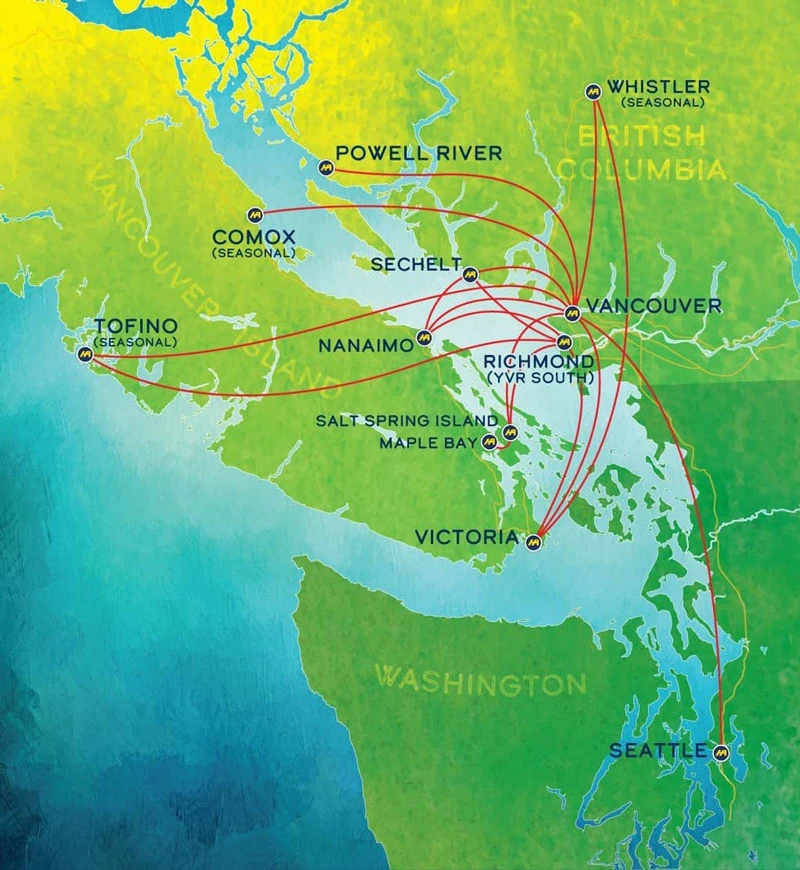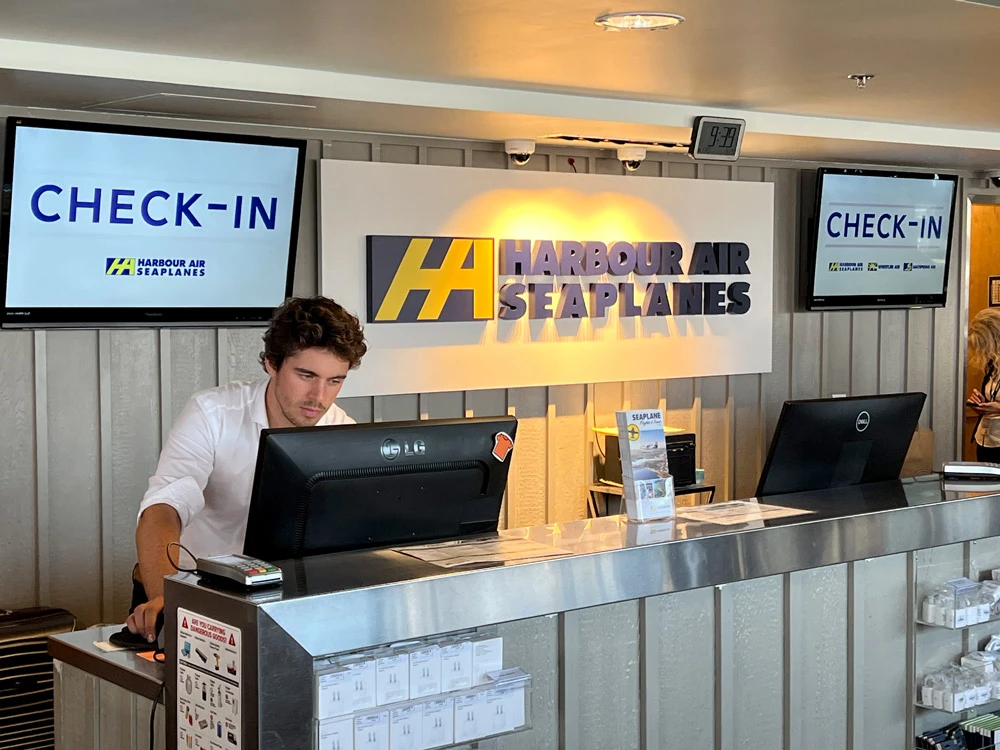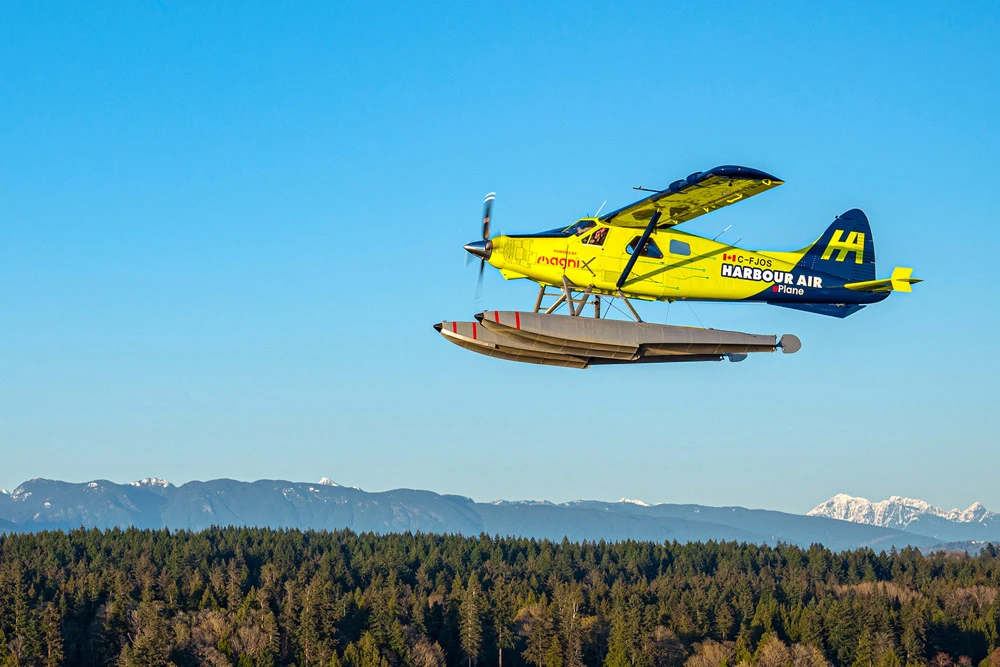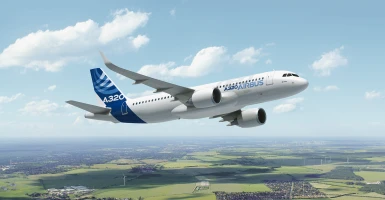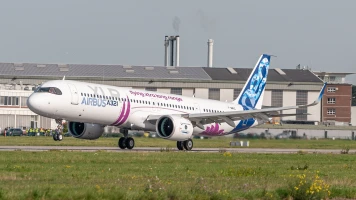aviation
Vancouver’s seaplanes will soon be flying with electric propulsion
Seaplanes are a normal means of transportation in Western Canada. Starting in 2025, the largest operator, Harbour Air, aims to fly sustainably using electric propulsion with the e-Beaver.
author: Andreas Spaeth | 7 mins reading time published on: 05.02.2024
author:
Andreas Spaeth
has been traveling the world as a freelance aviation journalist for over 25 years, visiting and writing about airlines and airports. He is frequently invited to appear on radio and TV programs to discuss current events in the sector.
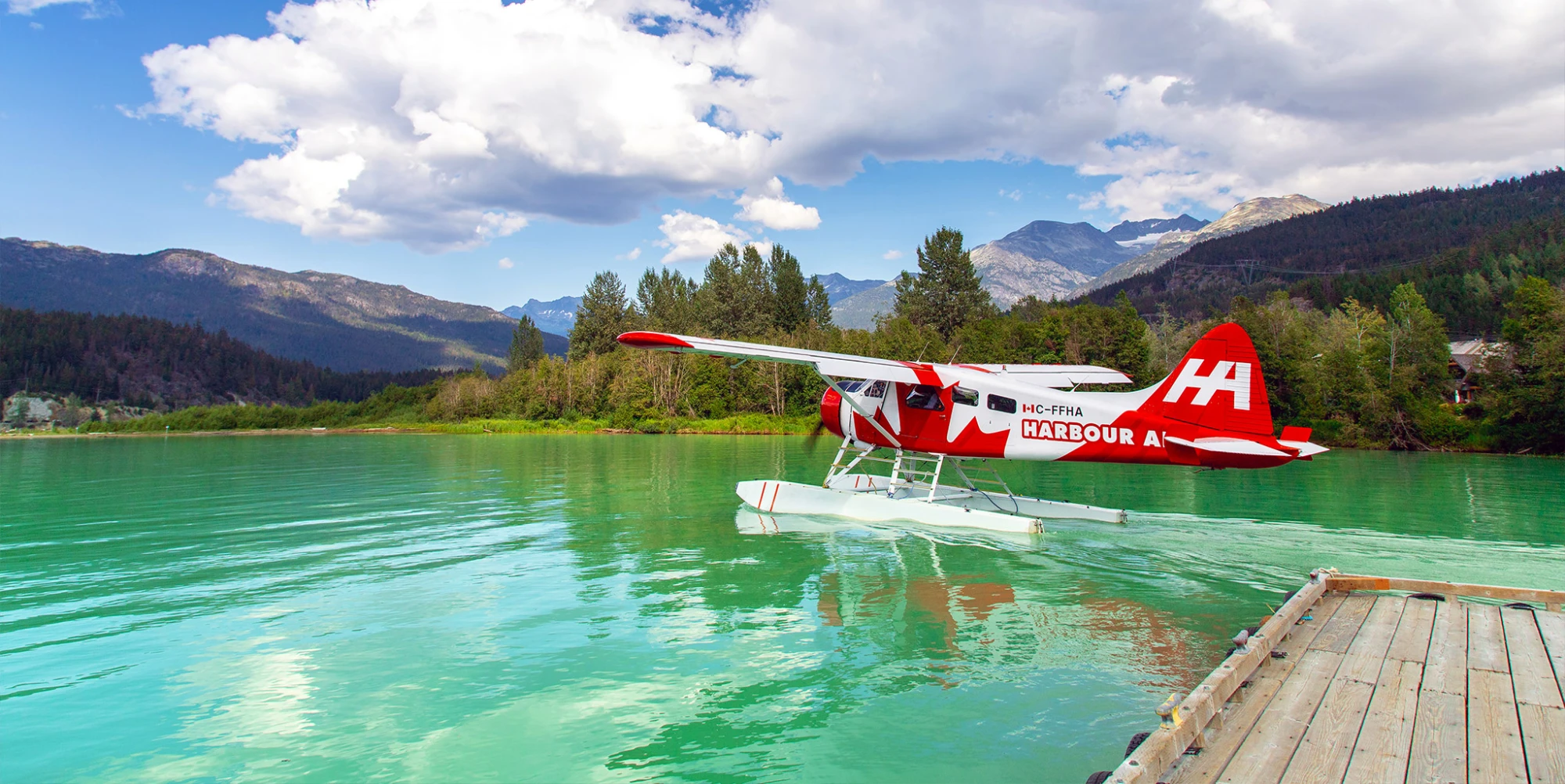
©Harbour Air
Water as blue as the sky shimmers in the morning sun against the imposing mountain backdrop of Vancouver harbor. It’s the perfect time to use a typical means of transportation for the most frequently flown route on Canada’s west coast: a seaplane operated by the largest provider, Harbour Air. Nowhere else is flying so relaxed—the cozy terminal at the Vancouver Harbour Flight Centre is within walking distance of downtown, so no one has to wait long. Just before departure, the pilot personally picks up his passengers and takes them to the plane’s dock. “Boarding starts five to ten minutes before departure, so it’s enough to be there shortly beforehand,” Bert van der Stege says.
28
Flights daily
Reflects strong demand and consistent service provided by Harbour Air
The 45-year-old Dutchman has been CEO of Harbour Air since September 2022 and lives with his family in Victoria on Vancouver Island, the charming capital of British Columbia. The city of Vancouver, population 2.5 million, is just 95 kilometers away as the crow flies, or 26 minutes by plane. Van der Stege, like many of his passengers, commutes between the two cities. As is so often the case in Canada, seaplanes offer the fastest way to get from A to B; there’s water almost everywhere, but not airports. In Vancouver and Victoria, passengers board and disembark right in the middle of the city.
Harbour Air by the numbers
Route network: Vancouver Harbour to Victoria Harbour is the airline’s most important route, with up to 28 flights a day in each direction. Its longest routes are from Vancouver to Seattle Lake Union and to Tofino, each with a flight time of 50 minutes. The tourist destinations of Tofino, Comox, and Whistler are served only during the summer season. Harbour Air’s route network also includes five other destinations in the region, including Richmond, which is located directly at Vancouver International Airport and offers an electric shuttle bus to the main terminal.
Passengers flown:
2018: 430,000; 2019: 450,000; 2022: 380,000; 2023: 440,000
Daily flights in summer:
280–300
Fleet in 2024:
1 Cessna 208B Grand Caravan EX (9 seats), 14 DHC-2 Beavers (6 seats), 23 DHC-3T Otters (14 seats), 4 DHC-6 Twin Otters (18 seats)
440,000
Passengers (2023):
Harbour Air is a significant provider in regional air transport
Seeing whales from the window
“Most of our frequent flyers fly back and forth two or three times a week. No one reads the newspaper or looks at their phone; they’re always looking out the window. Just now, a regular customer was all excited to tell me about the whales he’d just seen. It’s a different way of traveling—and unique for Canadians to show up for work like this,” the CEO explains. The seaplane pilots fly visually, so they’re almost always on time in summer when the weather is good. At the serviced ports, the wet runways are marked by buoys, and to improve punctuality and safety in poor visibility, the pilots are now starting to use instruments as well in their approach to some destinations, such as Victoria. The larger landing sites have their own control tower for seaplanes.
More than half of Harbour Air’s passengers (approximately 440,000 in 2023) fly between Vancouver and Victoria on planes equipped with 6 to 18 seats. Harbour Air deploys 55 percent of its total flight capacity on this route, with its aircraft making the trip up to 28 times a day in each direction. Boasting a “floating fleet” of 45 aircraft, the private Canadian airline is the world’s second largest operator of scheduled seaplane flights, after Maldivian Air Taxi in the Indian Ocean.
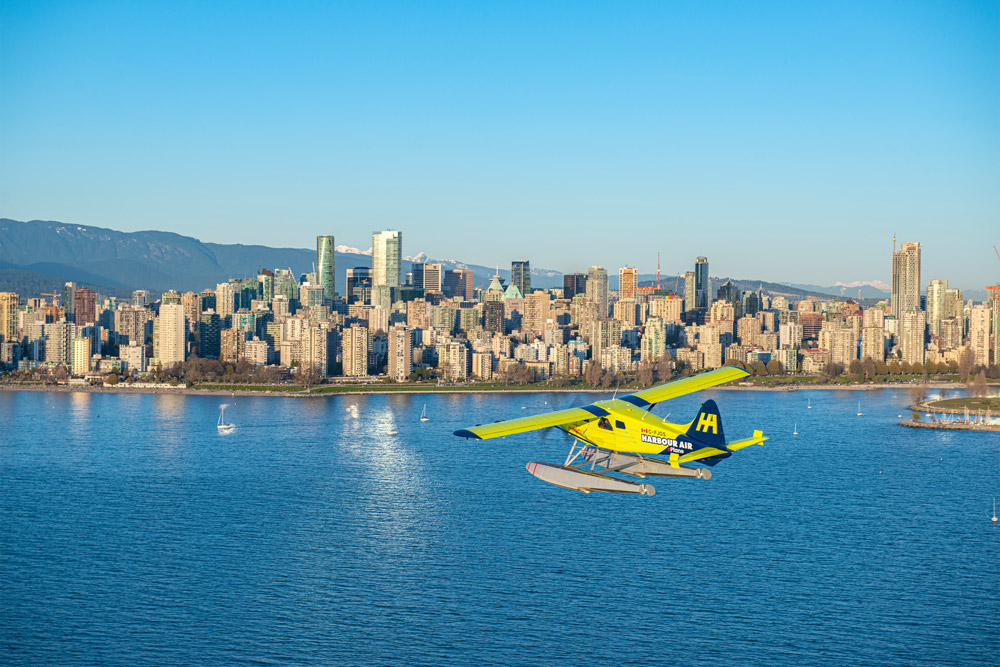
©Harbour Air
72 kilometers: The distance covered during the 24-minute electric flight. A significant milestone in the development of electric seaplanes.
1957
The year the de Havilland DHC-2 Beaver was built, representing the longevity of this aircraft type
World premiere at Harbour Air: The first electric flight
In December 2019, the small company made headlines around the world: “First electric flight of a passenger airplane.” Curiously, the star of the day was an aircraft that was built back in 1957 and hasn’t been made since 1967: the de Havilland DHC-2 Beaver, the legendary Canadian bush plane. Harbour Air operates 14 of these 6-seaters and affirms that the well-maintained workhorses are, technically speaking, as good as new. The first electric flight over Vancouver lasted only 15 minutes, but the previously front-mounted Pratt & Whitney P-985 Wasp Junior piston engine had been replaced with a Magni500 electric motor from the U.S. manufacturer MagniX, which delivers 559 kW (750 hp).
The first battery was supplied by a U.S. manufacturer. In August 2022, following the pandemic, the world’s first all-electric point-to-point flight of an “e-plane” took place, lasting 24 minutes and covering 72 kilometers. “By fall 2023, we had completed 78 takeoffs and landings and around 50 flight hours with the first electric Beaver, but we’re noticing that the battery from 2019 is deteriorating over time,” van der Stege says. “We’re now replacing it with a new, lighter version from H55, a Swiss company that supplies the battery for the prototype of the second aircraft that we want to get certified.”
A new battery from a solar flight pioneer
The co-founder of H55, a company with 120 employees, is André Borschberg, who set a new flight record with his fellow pilot Bertrand Piccard in 2015–2016: they circumnavigated the globe in the Solar Impulse, an aircraft powered purely by solar energy. “As a pioneer, Harbour Air is a very interesting example. They have independently decided to push ahead with electrification, and we need partners who really want to take that first step,” Borschberg says. MagniX from Seattle is again supplying the propulsion system, this time the more powerful Magni650 electric motor with 640 kW (850 hp). The new “e-Beaver” is currently awaiting approval from the federal authorities in the U.S. and Canada. “We’re working on getting a certified aircraft by 2025. If we manage that, it’ll have a range of 30 to 35 minutes plus 25 reserve minutes, which is enough for most of our routes,” van der Stege says. “Our hope is that we’ll be able to take three, maybe even four passengers on these flights starting at the end of 2025,” van der Stege says.
An entire fleet flying emissions-free in ten years
Including a potential hydrogen hybrid Twin Otter, the largest aircraft with 18 seats, it could take around ten years until the entire fleet is powered by environmentally friendly fuels. “Maybe in less than two years, we’ll be the first airline in the world to sell commercial tickets on scheduled flights from A to B with electric aircraft,” van der Stege speculates. So far, the e-Beaver’s test flights have gone surprisingly smoothly: “We’re almost disappointed that not much is happening and everything is going according to plan. There aren’t a lot of surprises.” Nevertheless, some of the findings are new: “Battery performance and charging time depend in part on the water temperature. The longer the aircraft is parked in cold water, the longer it takes to get it going. Fortunately, we fly at a very low altitude, so we need much less energy for takeoff than others.”
5
Million Canadian dollars
Harbour Air's investment in sustainable flight technologies
Plenty of money, sweat, and new hurdles
Harbour Air’s experience makes it an important trailblazer. It is investing five million Canadian dollars in the project—a lot of money for a small company. However, it’s long played a pioneering role when it comes to sustainability. Since 2007, the company has been the first in North America to feature completely carbon-neutral operations thanks to offset payments.
Now it wants to do everything it can to once again be a pioneer in producing no emissions at all, even if the goal is ambitious. “Innovation isn’t easy; there are many hurdles to overcome,” as van der Stege well knows—and there are probably many more awaiting him on the way to green flying.
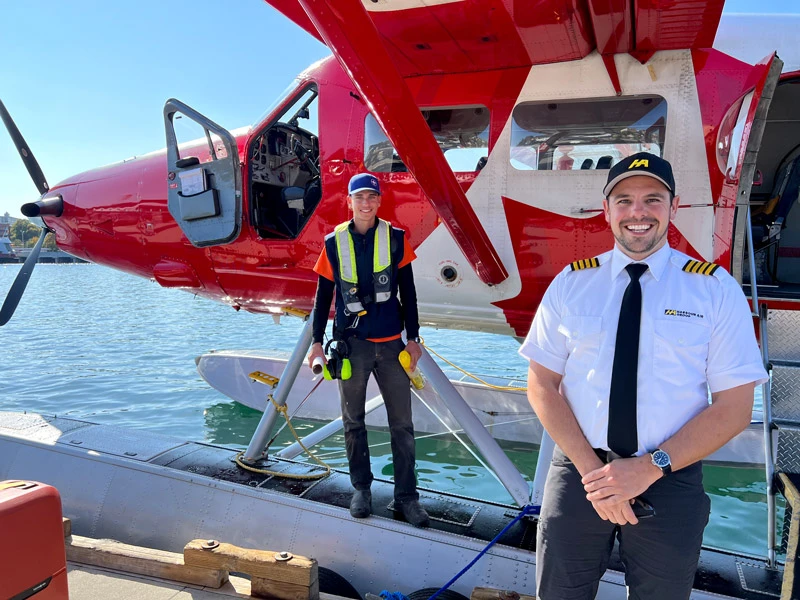

©Andreas Spaeth


©Andreas Spaeth
Climbing the Ranks at Harbour Air: A Pilot's Career Path from Dockhand to Flight Captain.
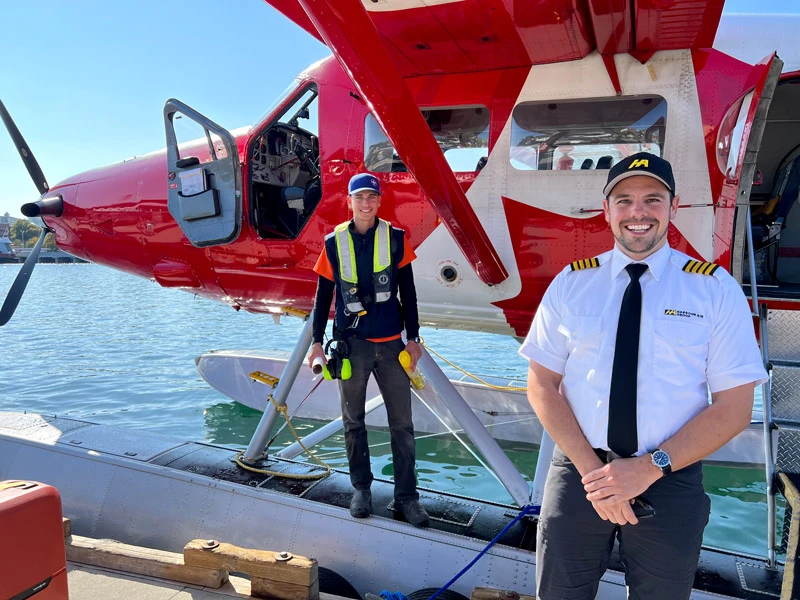
©Andreas Spaeth
Pilot careers at Harbour Air
The ideal pilot career at Harbour Air begins with young people starting out as “dockhands”—basically, harbor workers who help with docking and undocking the aircraft and with loading luggage. This way, they’re already very close to their dream job and learn the basics first. Just like their boss, Bert van der Stege: he started out with an internship in Lufthansa baggage tracing. Today, he says: “Most interested parties come to us with a pilot’s license and want to fly themselves. But it’s difficult for young pilots to find their very first job,” van der Stege says. “They start off working in ground handling for a year or two and then they can switch to the cockpit. That’s what every new First Officer in the Twin Otter has done.”
Harbour Air currently employs 80 pilots. The company purposely recruits new talent from its own ranks. “Most of the pilots love flying here and won’t even consider a career in the cockpit of a Boeing 787,” van der Stege says. “Here they get to go home every evening, and we also offer a great work environment.” Some do switch to major airlines to fly jets, but van der Stege says: “Many pilots who’ve moved elsewhere come back at some point and say: I miss this, I want to fly seaplanes again.”



